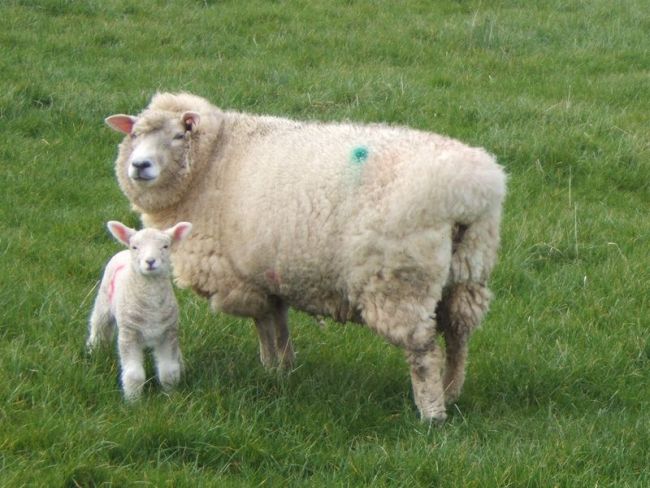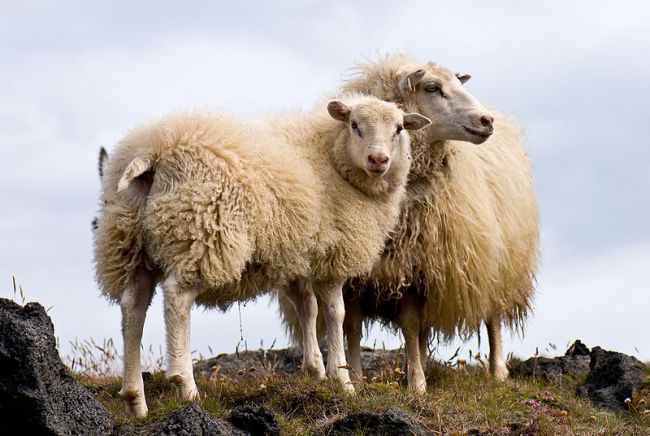| Irish Forums Message Discussion :: Native Irish Sheep. Info breeds of Sheep native to Ireland |
   | Irish Forums :: The Irish Message
Forums About Ireland and the Irish Community, For the Irish home and Abroad. Forums include- Irish Music, Irish History, The Irish Diaspora, Irish Culture, Irish Sports, Astrology, Mystic, Irish Ancestry, Genealogy, Irish Travel, Irish Reunited and Craic
|  
|
Native Irish Sheep. Info breeds of Sheep native to Ireland


|
|
|
| Irish
Author |
Native Irish Sheep. Info breeds of Sheep native to Ireland Sceala Irish Craic Forum Irish Message |
|
Native Irish Breeds
Irish Forums Member
|
| Sceala Irish Craic Forum Discussion:
Native Irish Sheep. Info breeds of Sheep native to Ireland
|
|
|
Hi looking for info and help for our new website on Native Irish breeds.
Need any info you have on native Irish sheep.
Any information on what type of sheep breeds are native to Ireland is going to be helpful.
We manage a small livestock project and this information will be used to promote native Irish breeds. You might be surprised and shocked at what breeds are native and what breeds are recent imports. Should be really interesting to find out exactly what cattle are genuine native Irish, if any.
Obviously it is going to be impossible to be 100% scientific about what makes a native pure bred Irish Sheep. What breeds of Sheep have been imported, or today considered part native livestock.
Respected experts consider that any livestock that existed in Ireland before the Normans came to Ireland as pure Irish, or ancient Irish breeds.
Such ancient pure bred native Irish livestock are now very rare, the vast majority are now sadly extinct, at least as 100% pure bred Irish breeds. Some ancient Irish breeds were bred out purposely, for a short term profit potential.
Great interest again in native Irish.
Please can you help with my other info requests for Cattle and dogs.
We will share all info and provide feedback as requested.
Info collated so far on the native Irish cattle breeds.
Comments in old books has assumed that the ancient Irish sheep were either
Short woolled mountainy type sheep. or A long woolled type for lowlands and plains, the kind that adapts well to most environments.
These old Irish farming writers also refer back to accounts of the sheep in Ireland in the early part of the last millennium as producing brown wool based on observations of the monk Giraldus Cambrensis who visited Ireland in the 12th century.
Youatt in 1837 commented that County Galway “produces a great number of sheep and is a high a state of perfection as any of the other sheep districts".
Dutton (1824) states that the original sheep "have nearly all disappeared and given place to a fine breed not to be equalled by the general stock of the long-woolled breed in England”.
Low (1845) stales that "crossing with the new Leicester Breed", which began during the last quarter of the previous century, ”has been continued with such success that it is now difficult lo find an individual of the unnamed race in the whole country”,
Ironically there was a native Kerry Hill sheep, described in 1845 as large for a hill breed, crooked horned, wiry wooled, slow to mature and lean, prone to brown or black and more like deer than sheep. By 1902, they were described as inferior to scottish mountain, but none appear to exist today
I have noticed that some of the North American mountain breeds are more like deer!
The Wicklow Cheviot was preceeded by 2 native breeds, one was the "cottagh" sheep, but both were bred out.
We had the " long-legged Tipperary" but this breed and other were improved with the importation of Leicester rams. The imported Dishley Leicester was crossbred to produce some of the Roscommon and Galway breeds.
--
The Belclare Sheep stock. What we have now.
They are polled, white in colour with a good fleece, very sound feet, high resistance to worm infestation and low mastitis problems.
Ewes are docile, have excellent mothering ability with a minimum of lambing difficulty and are capable of rearing three lambs if given adequate feed during lactation.
Daughters of your own ewe flock, sired by a Belclare ram are capable of increasing lambing rates by up to 30%. For lowland flocks the national average is 1.28 lambs weaned per ewe joined with rams.
Research shows the only real way of substantially increasing income from sheep farming is by increasing the number of lambs sold per ewe joined.
Belclare rams are ideal for use on ewe lambs. The lambs are easily lambed, hardy, vigerous, agressive suckers, and will not be rejected easily.
But they are not a old sheep nor pure Irish stock. Belclares are a composite breed developed here, so Irish but not ancient or a old native breed.
The Galway Sheep
The Galway is a breed of domestic sheep originating in Galway, in the west of Ireland. They are a large polled white-faced sheep, having a characteristic bob of wool on the head and wool on the legs. The outer lips are of a dark colour and dark spots on the ears are common. The average litter size is 1.45 in pedigree flocks. While a major proportion of ewes within the bred weigh 80–85 kg and have a litter size of 1.3, there is wide variation to be found.
This breed is primarily raise for meat. In 1999 there were less than 1000 true to type Galway sheep in 39 pedigree flocks (a big increase from the 14 breeders in 1990). Practically all the breeders are west of the Shannon. The breed which developed was for many years known as the Roscommon, and a Flock Book of Roscommon Long-Wool Sheep was established in 1895, surviving until at least the 1920s. The Roscommon was a large, white-faced polled breed and, though classified as Longwool, did not have the very long staple characteristic of breeds such as the Lincoln and Leicester Longwool.
In 1923, by which time the Roscommon breed society was ailing, a group of breeders in Galway founded the Galway Sheep Breeders Society at Athenry, County Galway, and inspected over 6,000 ewes and 200 rams, presumably sheep of Roscommon type, admitting 10% of these to the new register. It is probable that the selection was for a slightly neater type of sheep than the old Roscommon.
From the society
galwaysheep.ie

It is my view, based on the available evidence on the thrust of breed development in Ireland that the Galway breed came into existence as a name change for the common long-woolled type which had been developed in the central plain of Ireland through the period up to the mid 18OOs. Since the lowland regions of Connaught were the principal breeding area it is not surprising that counties in Connaught provided names for the Irish long-woolled breed.
The selection of animals for entry into the first flock book of Galway sheep (published in 1924) followed a similar pattern to that used in North Roscommon 28 years earlier, but probably entailed more intensive selection. The account in the flock book states that over 6000 ewes and 200 rams were examined by an inspection committee and 600 ewes plus 20 rams were admitted to the flock book a total of 23 flocks were established by this process.
We dont seem to have many if any 100% pure bred Irish Sheep left. Some of the English and Scottish Sheep stock do have Irish lineage, but few notes are credited.
The Kerry Hill Sheep. The Connemara Sheep and Mayo Blackface Sheep, they are breeds that can be classified as the mostly native Irish, they are dated from the 1700's on.

Icelandic sheep
It is possible that the Icelandic sheep gives us more of a true picture of what our own native Irish sheep would have looked like.
They are supposed to be ancient Norwegian stock, but we know that the Vikings who settled Iceland have many Irish connections. They developed a lot of livestock.
Maybe no coincidence their Genetic base coat is brown. Like those mentions of the Irish sheep by the monks in Ireland a thousand years ago.
|
|
|
|
|
|
|
|
|
|










